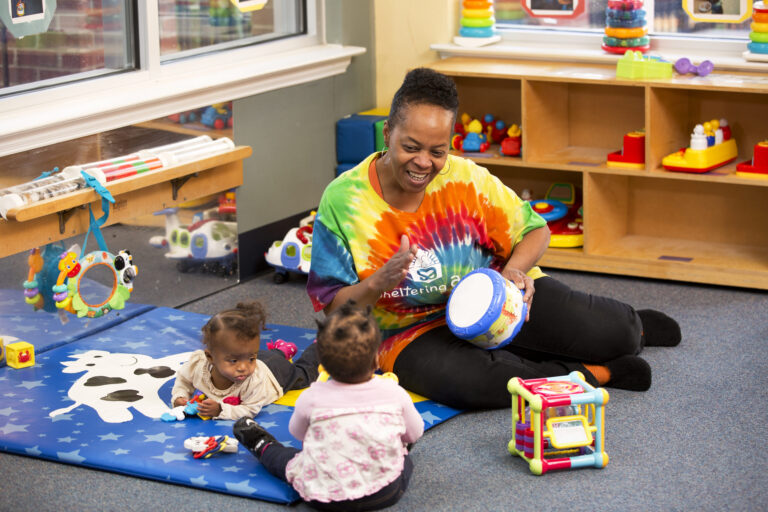November is Native American Heritage Month, a great time to uplift and celebrate the histories, traditions, and contributions of the diverse, multifaceted Native American cultural groups in our country! Last month we shared tips on Honoring Indigenous Peoples’ Day in the Classroom to highlight the importance of giving a voice to our country’s native people. Use this month to go deeper, honoring histories and traditions of various tribes; the specific challenges Native Americans have faced both historically and in the present-day, and illustrate the ways Native Americans have worked throughout our country’s history to help both their own tribes and all Americans.
This conversation becomes even more important as we near the Thanksgiving holiday. It is vital that we all intentionally honor Native American culture around a holiday that has been used to erase its significance in our country and downplay the injustices of colonialism.
While Thanksgiving in America is recognized as a time to gather with family and friends and is generally thought of as a time for reflection and gratitude, the holiday has traditionally been centered around the concept of the ‘First Thanksgiving’, when the Pilgrims and the Wampanoag tribe in Plymouth, Virginia shared a feast. This story paints a picture of unity between English colonists and Native Americans that falsely represents the impact colonization had on America’s native people.
Sadly, for many Native Americans, Thanksgiving is not cause for celebration. It marks the beginning of colonization and the centuries of oppression and violence at the hands of European settlers. For this reason, it is important that we uplift the voices of America’s indigenous peoples when discussing this holiday.

Thanksgiving Books that Teach Different Perspectives
In October we shared tips on Honoring Indigenous Peoples’ Day in the Classroom to highlight the importance of giving a voice to our country’s native people. This November and Thanksgiving, we encourage you to have culturally aware conversations when talking about the holiday and what it symbolizes for different cultures across America.
Over the course of the month, you can include conversations that explore the lives and contributions of Native Americans. By continuing to give a voice to and highlight the stories of Native Americans, we help kids build a view of American history that represents the many different histories woven into the fabric of our nation and encourage them to take different perspectives. We also uplift a message of cultural responsiveness and inclusion to work towards social justice for marginalized groups.
Books and stories help you to highlight diversity and create a culturally responsive experience. Here are some suggestions for inclusive stories that highlight Thanksgiving:
- The Very First Americans by Cara Ashrose
- Giving Thanks: A Native American Good Morning Message by Jake Swamp
- Thankful by Eileen Spinelli
- We Are Grateful: Otsaliheliga by Traci Sorell
- Squanto’s Journey: The Story of the First Thanksgiving by Joseph Bruchac
- Duck for Turkey Day by Jacqueline Jules
- Tattered Sails by Dan Andreasen
You can also check out American Indians in Children’s Literature for more book suggestions to uplift the voices and stories of Native Americans!
Vocabulary words you can use to expand children’s vocabulary around this important topic:
Indigenous or Native people: The people who lived on a land first, before other groups of people came
Gratitude: being thankful for what you have
Harvest: the time of year when you gather crops
Feast: a large meal with lots of types of food
Use The TALK Strategy
As you read the book or tell a story, be sure to use the TALK strategy to engage in meaningful conversations.
T is for Tune In: get into the child’s world and let them know that what they are thinking, or feeling is important.
I was thinking about the story we just read, and I noticed you….
A is for Ask: ask open-ended questions to encourage back and forth conversation.
Why do you think……..?
L is for Lift Language: model the language you want children to use in the future.
Recognize their answer and expand on what they say by adding rich, complex language using sophisticated words, then answer the question yourself to show a language-rich response.
K is for Keep it going: Aim for multiple back and forth exchanges with children around the story.
Remember to Strive for Five – try to go back-and-forth with your child, or children, 5 times. #striveforfive
Use the book as a springboard to have rich, meaningful conversations around ideas of gratitude and thankfulness and sharing what you have with others.
FREE Access to Stories
Check the links below to access these books from home!
Resource |
Use(s) |
Cost |
| Epic Books | A digital reading website with many high-quality digital versions of picture books. | Free for Teachers, Free 30-day trial for families |
| Overdrive | A website and mobile app created for borrowing e-books. Access with your local library card. | Free |
| Local Library | Many libraries offer both in person and online access to books. | Free |
| YouTube | Read alouds of every book listed above, and many more. | Free |
Do you have questions or want more information? Join our virtual pods to connect with experts who can provide answers and support!
The Cox Campus is committed to ensuring literacy and justice for all. Through impactful strategies and learning experiences, families, educators, and anyone who works with children can make a difference by bringing the science of reading within reach for each child.




Can we have these activities sent to our house